Abstract
The antibiotic activity of metal complexes of N-methylthioformohydroxamic acid against gram-negative Escherichia coli NIHJ and gram-positive Staphylococcus aureus 209P was investigated. The kinetically labile, square-planar, divalent (Cu, Ni, and Pd) and octahedral, trivalent (Fe, Co, and Cr) complexes displayed activity, whereas the more inert platinum(II) or rhodium(III) complex displayed no activity, or activity only at elevated concentrations. The free ligand did not suppress the growth of the above organisms, and the sulfur atom of the ligand in its metal complexes appears crucial for activity. Uptake studies of radioactively labeled N-methylthioformohydroxamic acid, its nickel(II), platinum(II), iron(III), and rhodium(III) complexes were conducted in the Escherichia coli K-12 RW193 mutant, which is defective in the production of its native iron(III) transport agent, enterobactin. Uptake of 55Fe or 63Ni label from their metal complexes appeared to occur as free inorganic metal ions. The antibiotic activity of the iron(III) and nickel(II) complexes was not due merely to an enhanced accumulation of metal ions by the cell. Metal complexes of [35S]N-methylthioformohydroxamic acid enhanced the accumulation of 35S label compared to that of the free ligand. The antibiotic activity and uptake data are discussed in terms of possible modes of action.
Full text
PDF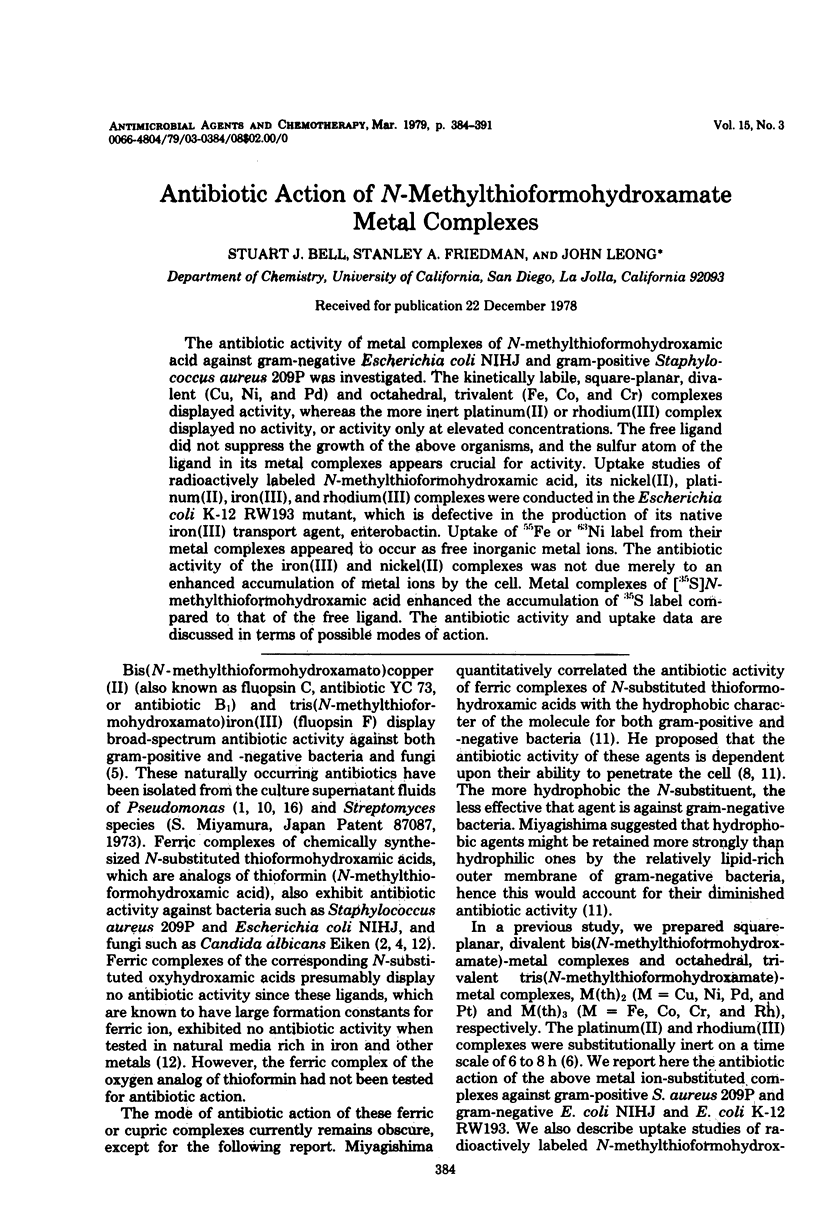
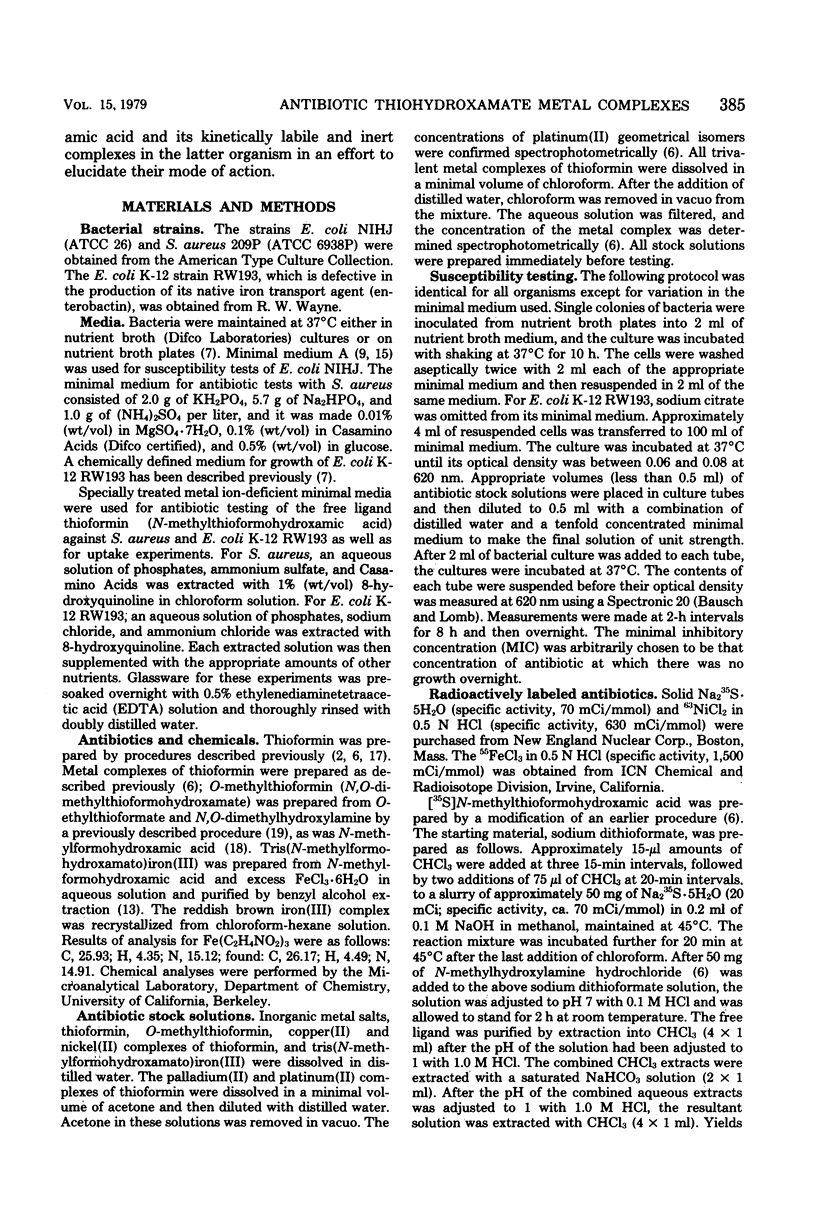
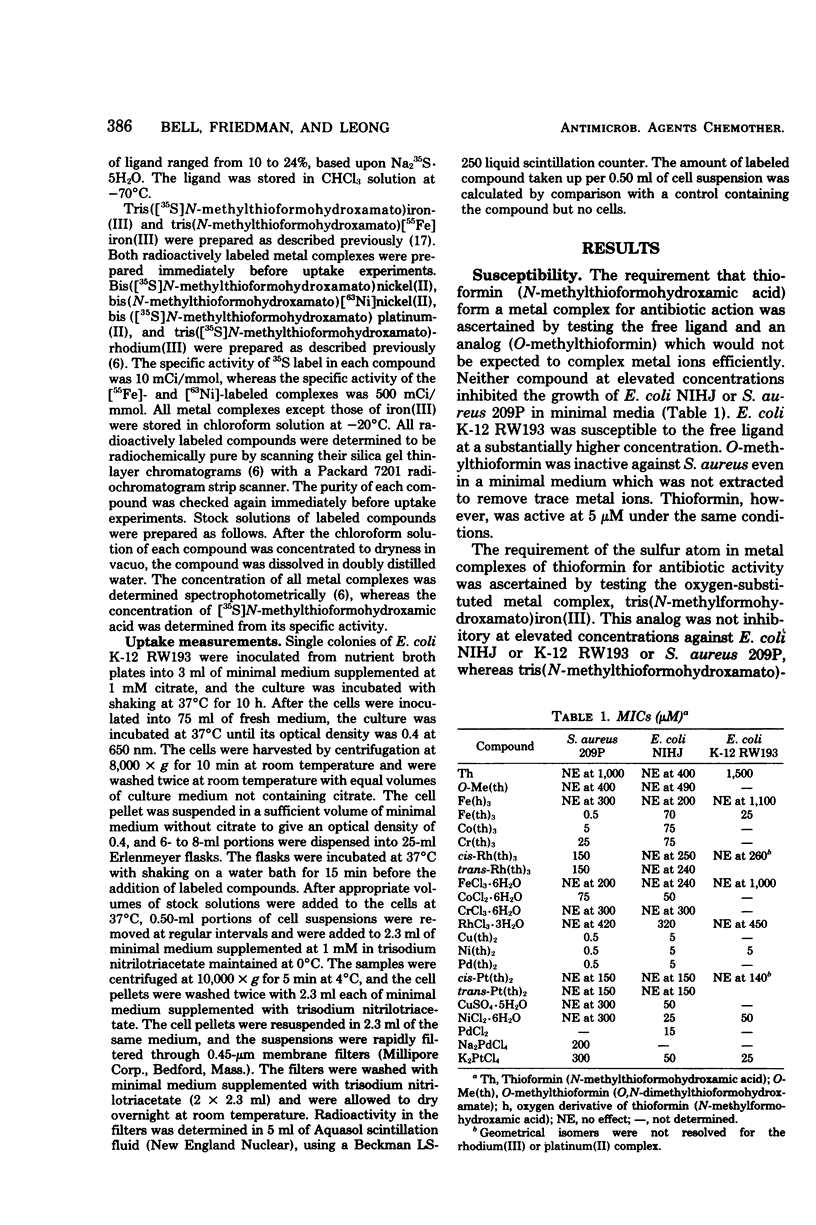
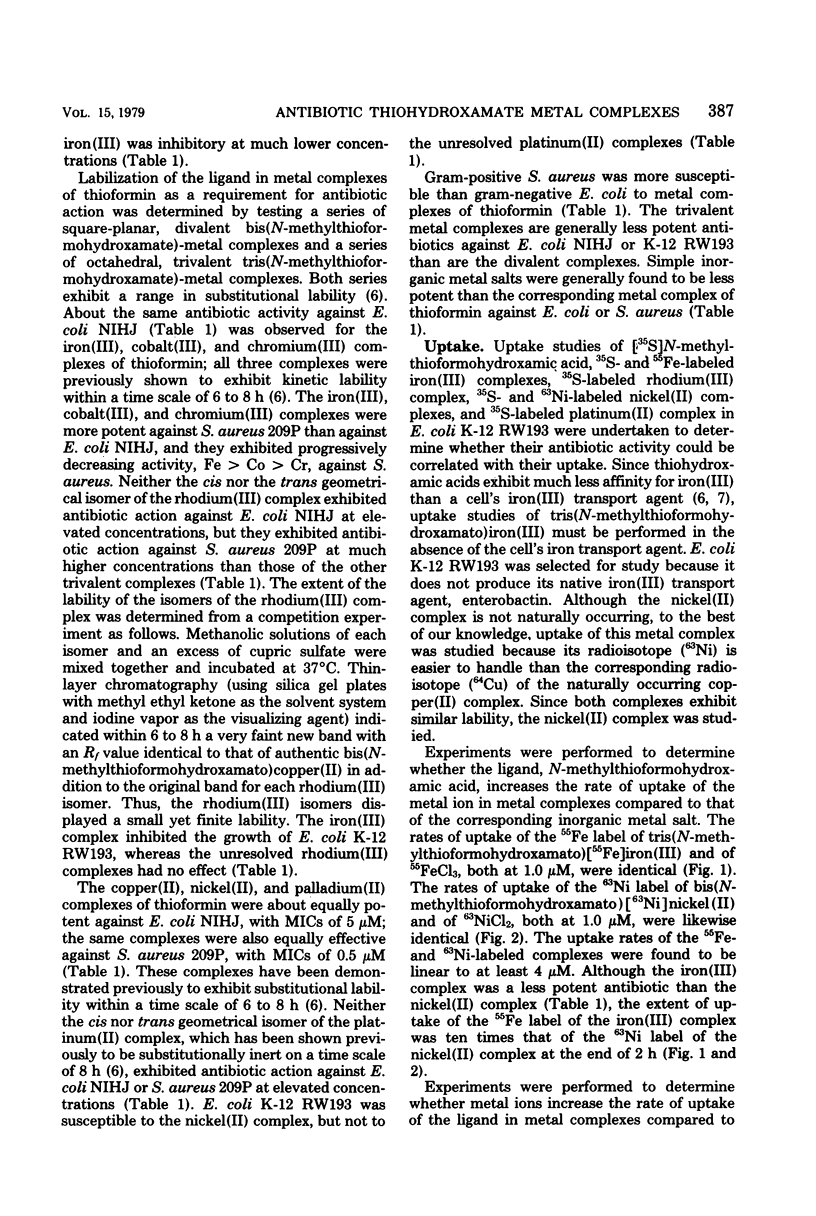
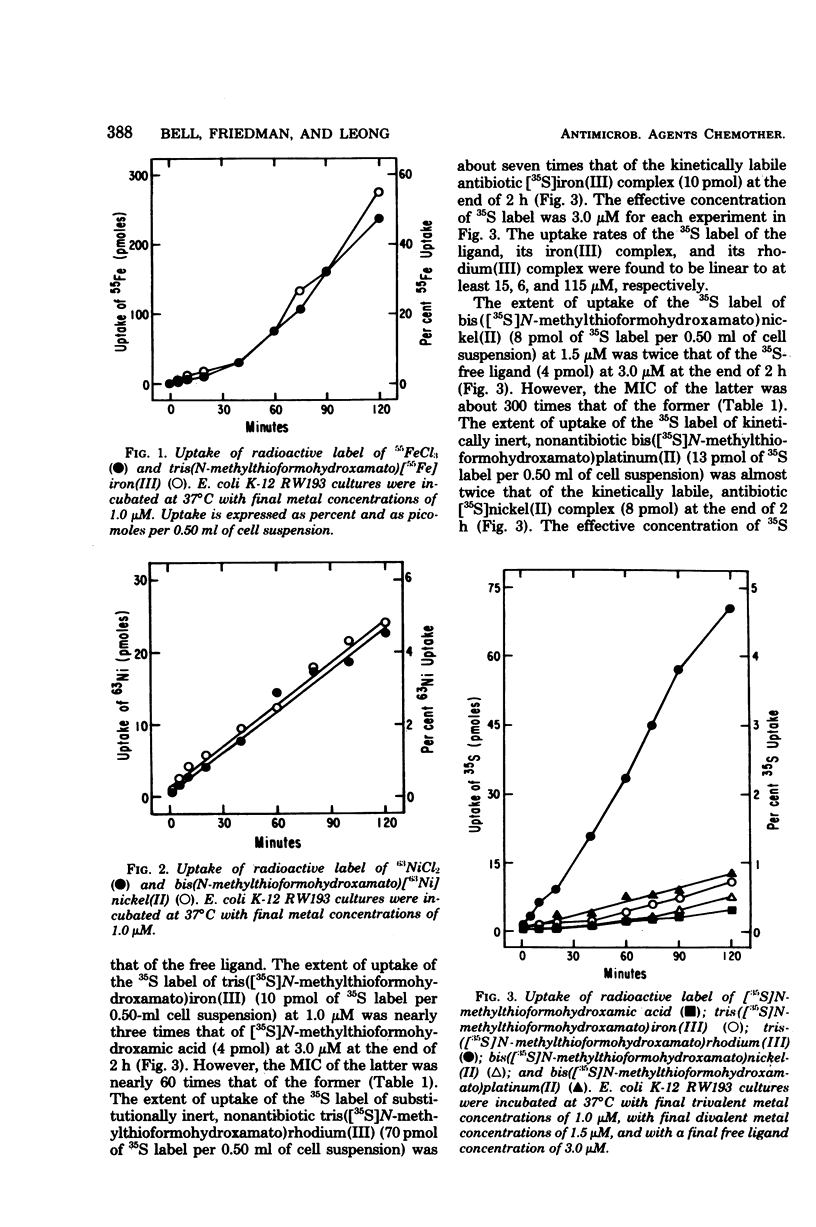
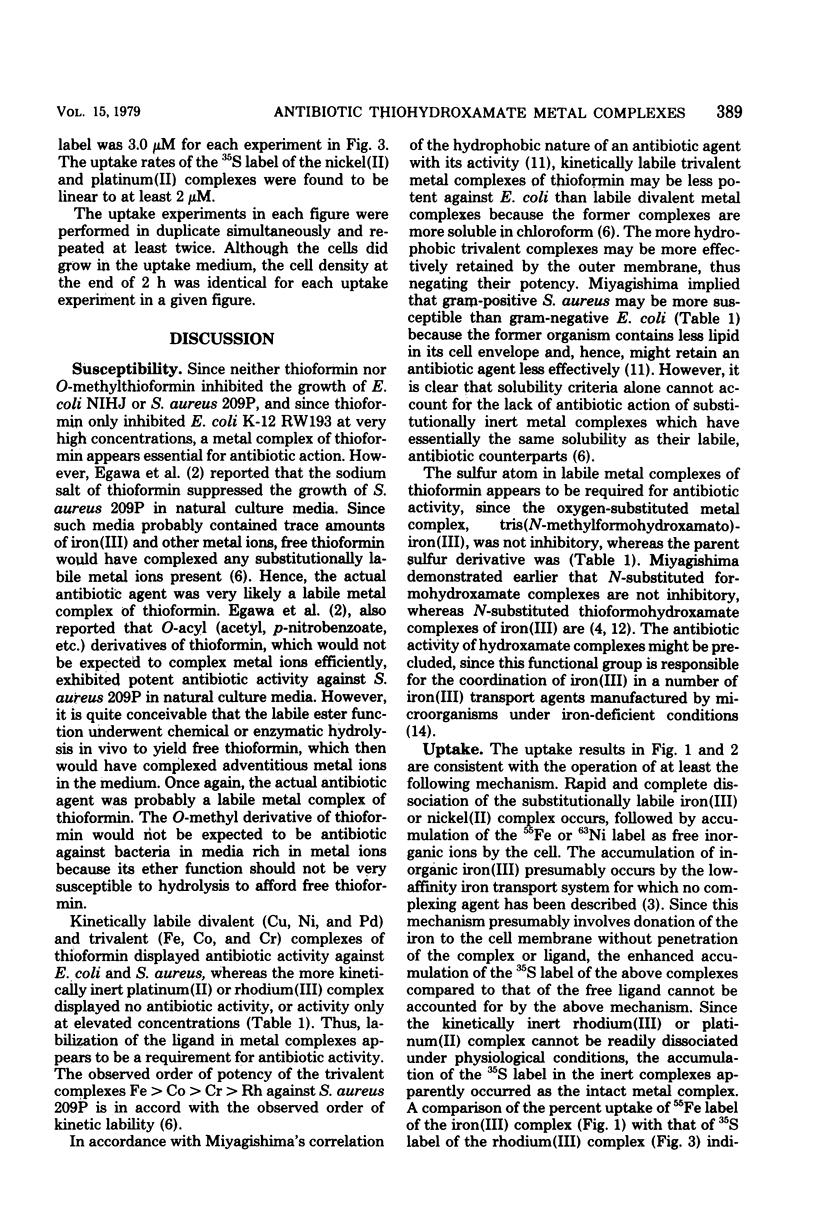
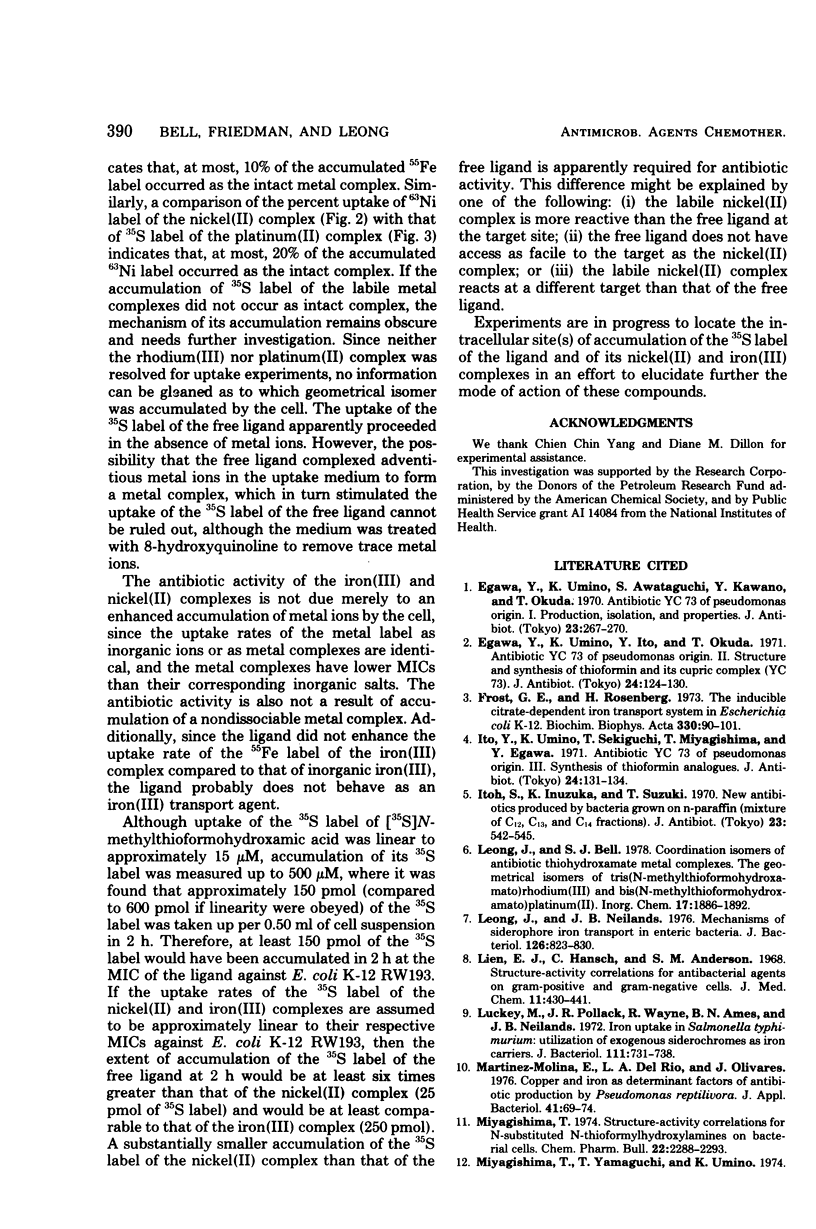
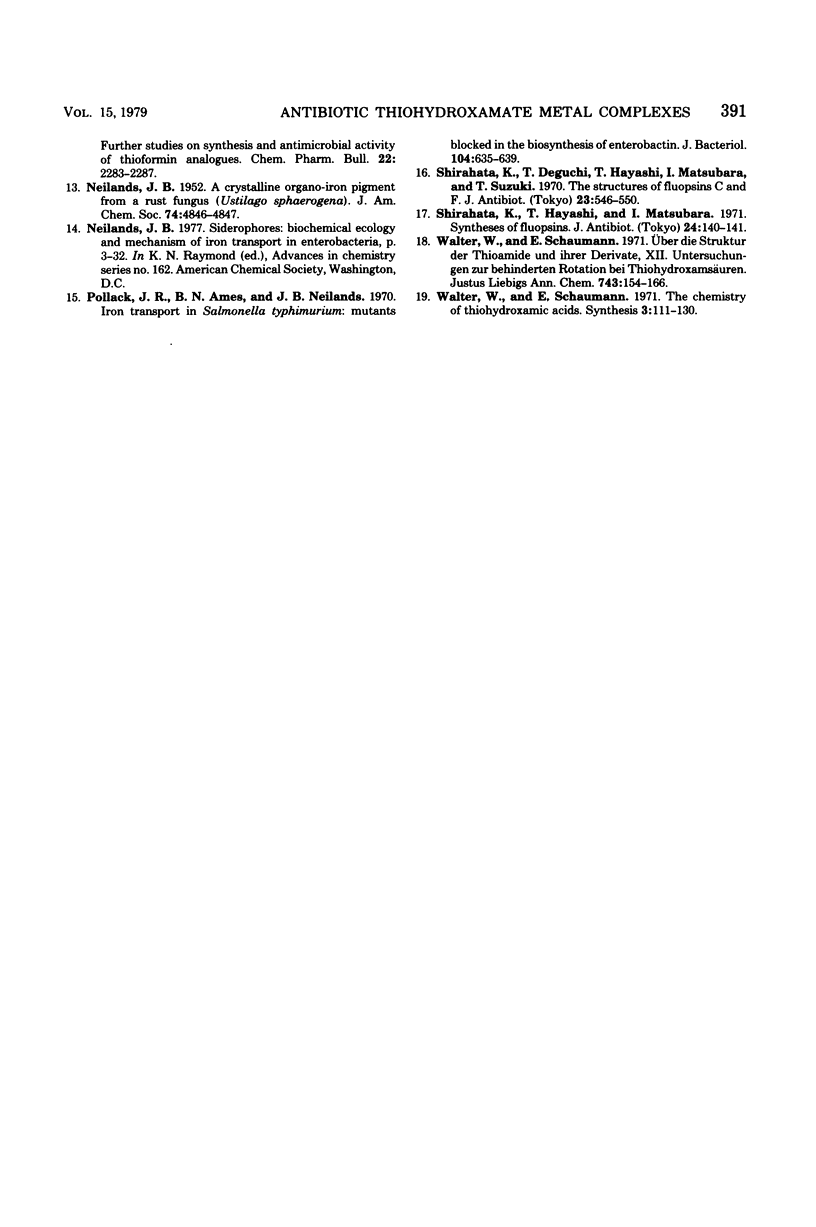
Selected References
These references are in PubMed. This may not be the complete list of references from this article.
- Egawa Y., Umino K., Awataguchi S., Kawano Y., Okuda T. Antibiotic YC 73 of pseudomonas origin. 1. Production, isolation and properties. J Antibiot (Tokyo) 1970 Jun;23(6):267–270. doi: 10.7164/antibiotics.23.267. [DOI] [PubMed] [Google Scholar]
- Egawa Y., Umino K., Ito Y., Okuda T. Antibiotic YC 73 of Pseudomonas origin. II. Structure and synthesis of thioformin and its cupric complex (YC 73). J Antibiot (Tokyo) 1971 Feb;24(2):124–130. doi: 10.7164/antibiotics.24.124. [DOI] [PubMed] [Google Scholar]
- Frost G. E., Rosenberg H. The inducible citrate-dependent iron transport system in Escherichia coli K12. Biochim Biophys Acta. 1973 Nov 30;330(1):90–101. doi: 10.1016/0005-2736(73)90287-3. [DOI] [PubMed] [Google Scholar]
- Ito S., Inuzuka K., Suzuki T. New antibiotics produced by bacteria grown on n-paraffin (mixture of C12, C13 and C14 fractions). J Antibiot (Tokyo) 1970 Nov;23(11):542–545. doi: 10.7164/antibiotics.23.542. [DOI] [PubMed] [Google Scholar]
- Ito Y., Umino K., Sekiguchi T., Miyagishima T., Egawa Y. Antibiotic YC 73 of Pseudomonas origin. 3. Synthesis of thioformin analogues. J Antibiot (Tokyo) 1971 Feb;24(2):131–134. doi: 10.7164/antibiotics.24.131. [DOI] [PubMed] [Google Scholar]
- Leong J., Neilands J. B. Mechanisms of siderophore iron transport in enteric bacteria. J Bacteriol. 1976 May;126(2):823–830. doi: 10.1128/jb.126.2.823-830.1976. [DOI] [PMC free article] [PubMed] [Google Scholar]
- Lien E. J., Hansch C., Anderson S. M. Structure-activity correlations for antibacterial agents on gram-positive and gram-negative cells. J Med Chem. 1968 May;11(3):430–441. doi: 10.1021/jm00309a004. [DOI] [PubMed] [Google Scholar]
- Luckey M., Pollack J. R., Wayne R., Ames B. N., Neilands J. B. Iron uptake in Salmonella typhimurium: utilization of exogenous siderochromes as iron carriers. J Bacteriol. 1972 Sep;111(3):731–738. doi: 10.1128/jb.111.3.731-738.1972. [DOI] [PMC free article] [PubMed] [Google Scholar]
- Martinez-Molina E., Del Rio L. A., Olivares J. Copper and iron as determinant factors of antibiotic production by Pseudomonas reptilivora. J Appl Bacteriol. 1976 Aug;41(1):69–74. doi: 10.1111/j.1365-2672.1976.tb00606.x. [DOI] [PubMed] [Google Scholar]
- Miyagishima T. Structure-activity correlations for N-substituted N-thioformylhydroxylamines on bacterial cells. Chem Pharm Bull (Tokyo) 1974 Oct;22(10):2288–2293. doi: 10.1248/cpb.22.2288. [DOI] [PubMed] [Google Scholar]
- Miyagishima T., Yamaguchi T., Umino K. Further studies on synthesis and antimicrobial activity of thioformin analogues. Chem Pharm Bull (Tokyo) 1974 Oct;22(10):2283–2287. doi: 10.1248/cpb.22.2283. [DOI] [PubMed] [Google Scholar]
- Pollack J. R., Ames B. N., Neilands J. B. Iron transport in Salmonella typhimurium: mutants blocked in the biosynthesis of enterobactin. J Bacteriol. 1970 Nov;104(2):635–639. doi: 10.1128/jb.104.2.635-639.1970. [DOI] [PMC free article] [PubMed] [Google Scholar]
- Shirahata K., Deguchi T., Hayashi T., Matsubara I., Suzuki T. The structures of fluopsins C and F. J Antibiot (Tokyo) 1970 Nov;23(11):546–550. doi: 10.7164/antibiotics.23.546. [DOI] [PubMed] [Google Scholar]
- Shirahata K., Hayashi T., Matsubara I. Syntheses of fluopsins. J Antibiot (Tokyo) 1971 Feb;24(2):140–141. doi: 10.7164/antibiotics.24.140. [DOI] [PubMed] [Google Scholar]


